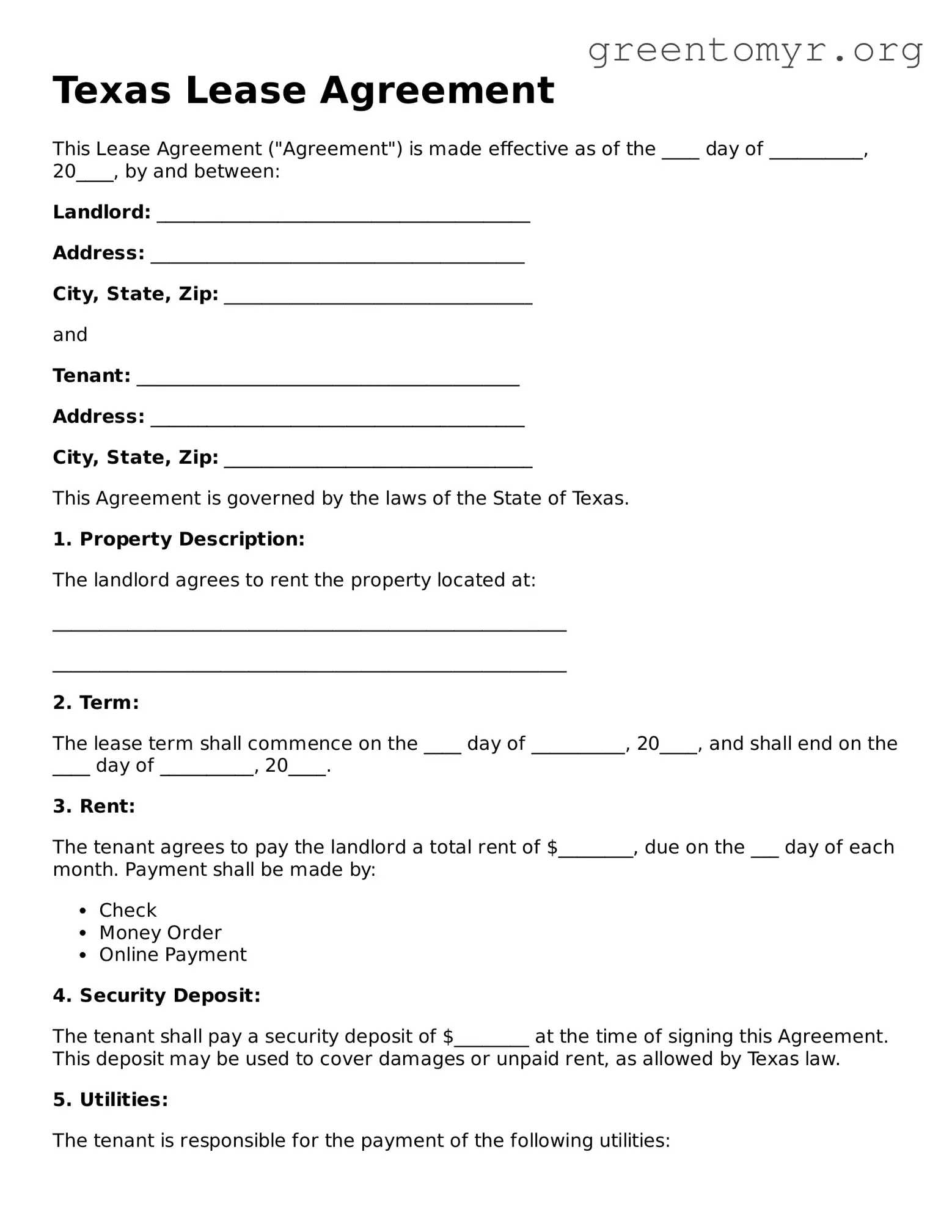Texas Lease Agreement
This Lease Agreement ("Agreement") is made effective as of the ____ day of __________, 20____, by and between:
Landlord: ________________________________________
Address: ________________________________________
City, State, Zip: _________________________________
and
Tenant: _________________________________________
Address: ________________________________________
City, State, Zip: _________________________________
This Agreement is governed by the laws of the State of Texas.
1. Property Description:
The landlord agrees to rent the property located at:
_______________________________________________________
_______________________________________________________
2. Term:
The lease term shall commence on the ____ day of __________, 20____, and shall end on the ____ day of __________, 20____.
3. Rent:
The tenant agrees to pay the landlord a total rent of $________, due on the ___ day of each month. Payment shall be made by:
- Check
- Money Order
- Online Payment
4. Security Deposit:
The tenant shall pay a security deposit of $________ at the time of signing this Agreement. This deposit may be used to cover damages or unpaid rent, as allowed by Texas law.
5. Utilities:
The tenant is responsible for the payment of the following utilities:
- Electricity
- Water
- Gas
- Internet
6. Maintenance and Repairs:
The landlord shall be responsible for maintaining the property in a habitable condition. The tenant shall notify the landlord of any needed repairs.
7. Termination:
Either party may terminate this Agreement by providing written notice at least ____ days before the end of the lease term.
8. Additional Terms:
_______________________________________________________
_______________________________________________________
9. Signatures:
By signing below, both parties agree to the terms of this Lease Agreement:
Landlord’s Signature: ___________________________
Date: _____________
Tenant’s Signature: _____________________________
Date: _____________
